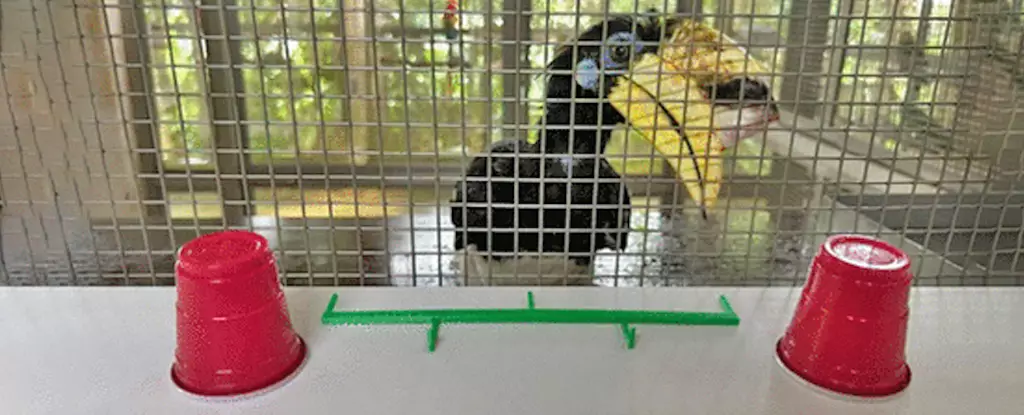Some animals possess a remarkable cognitive ability known as object permanence, which is the understanding that objects continue to exist even when they are not in sight. Among these creatures, the Oriental pied hornbills stand out as one of the few species with an advanced grasp of this concept. This fascinating skill plays a crucial role in their daily lives, particularly when nesting females seal themselves in tree hollows and rely on their mates to bring them food.
Female Oriental pied hornbills secure themselves in their refuge by using a combination of mud, poop, saliva, fruit, and bark to create a protective barrier. This leaves only a small opening for the males to deliver food, ensuring the safety of the eggs laid inside the nest. For the offspring to survive, the male hornbills need to comprehend that their partners exist even when they are out of sight, showcasing an impressive level of object permanence.
An Evolutionary Advantage
According to psychologists Ruitong Yao and Elias Garcia-Pelegrin from the National University of Singapore, the ability to represent objects and animals when they are not visible offers significant adaptive advantages in various activities such as foraging and evading predators. While primates, corvids, and parrots are known for their intelligence and object permanence skills, Oriental pied hornbills demonstrate a comparable level of understanding.
Yao and Garcia-Pelegrin conducted a study to evaluate the object permanence skills of six Oriental pied hornbills. The birds were trained to locate a visible treat by pecking at a specific location and were then presented with a series of challenges to assess their understanding. The birds successfully demonstrated visible displacement at stage five, where they could identify the cup containing the hidden treat. Remarkably, three of the birds advanced to stage six, showcasing their ability to comprehend invisible displacement.
The fact that only some hornbills reached the highest level of object permanence raises intriguing questions about the role of experience in cognitive development. Interestingly, the birds that struggled to progress beyond stage five had no prior breeding experience. This suggests that exposure to specific tasks, such as feeding and receiving food from a mate, could influence an individual’s cognitive abilities and enhance their object permanence skills.
Yao and Garcia-Pelegrin’s research sheds light on the remarkable cognitive abilities of Oriental pied hornbills and positions them as a potentially overlooked group of highly intelligent bird species. Further studies are needed to explore additional cognitive skills in these birds and determine if they possess capabilities that rival those of renowned intelligent bird families like parrots and corvids. The findings open up new avenues for understanding avian intelligence and the diverse ways in which different species adapt to their environments.


Leave a Reply